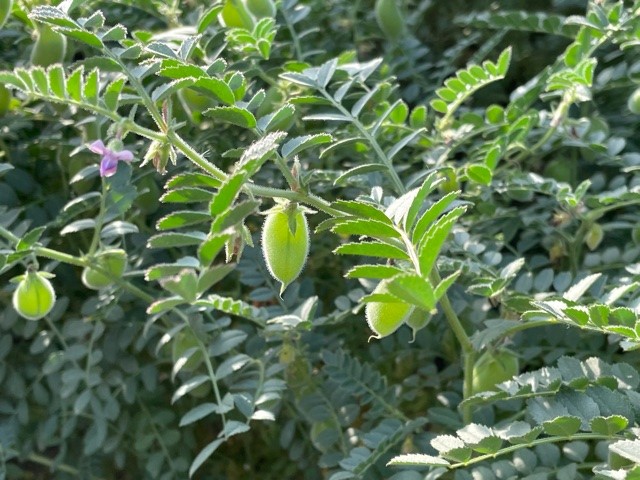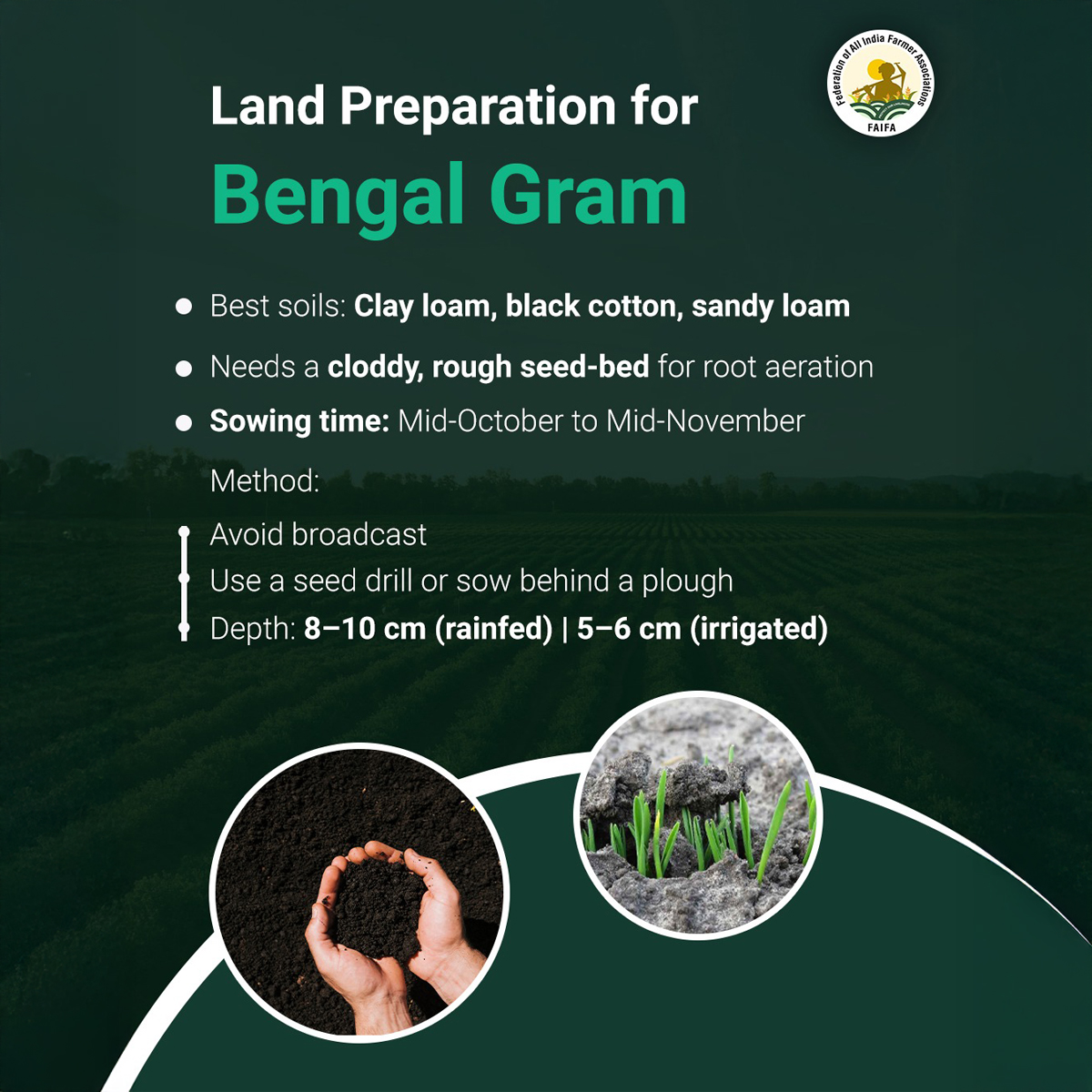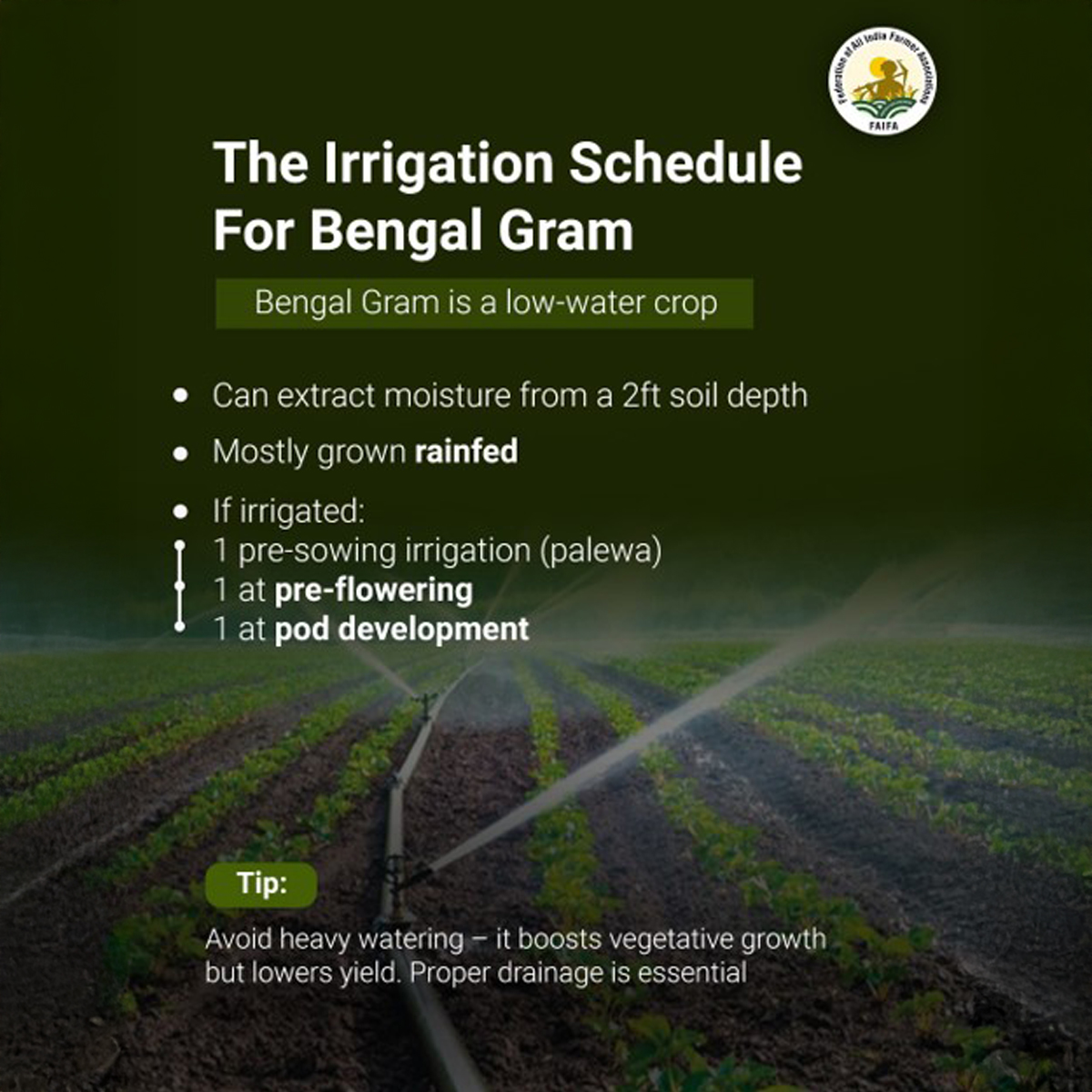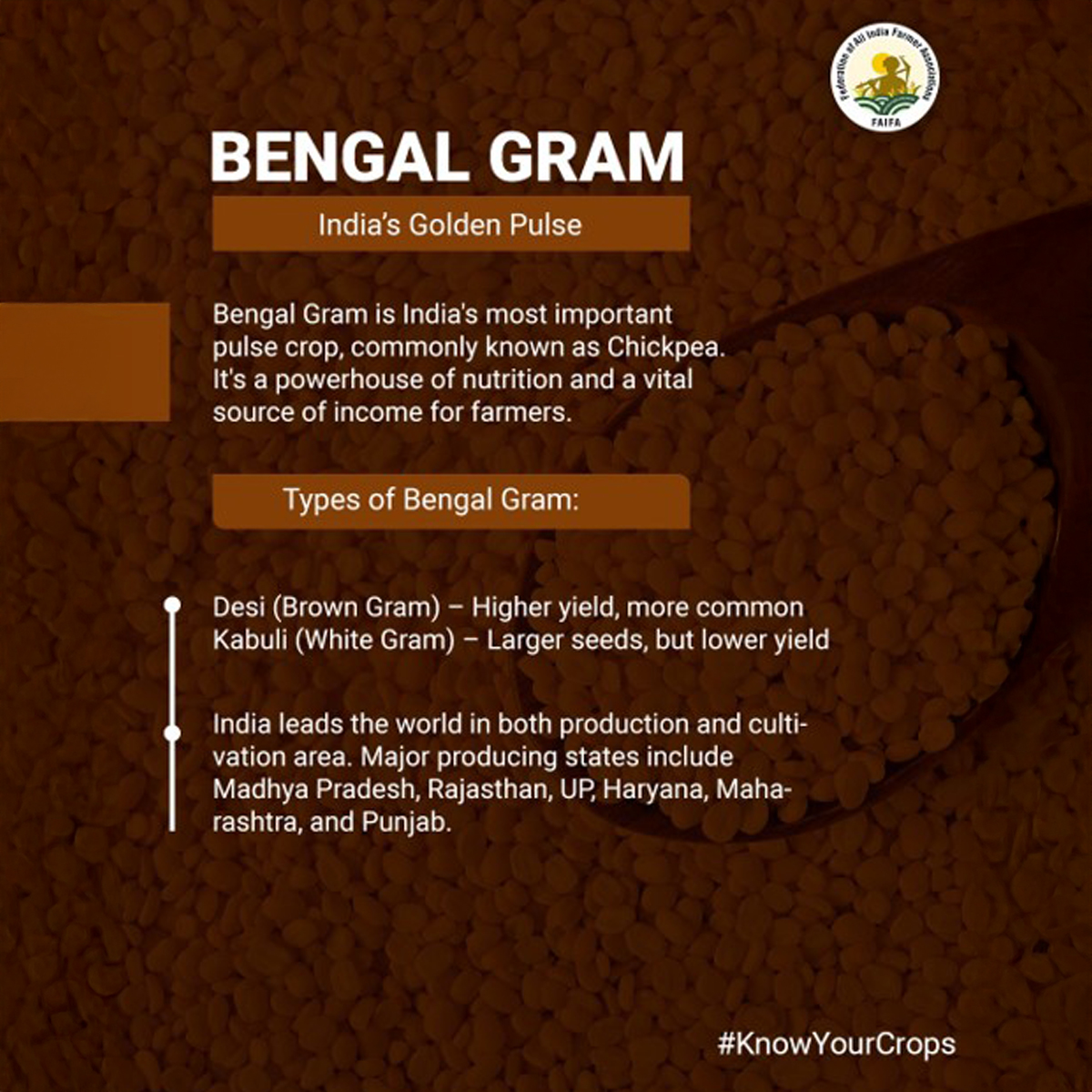Bengal gram
Chickpea (Cicer arietinum) is popularly known as “Bengal Gram” or “Chana” or “Gram” in India. It is the most important pulse crop in India and one of the oldest pulse cash crops cultivated across India. This premier pulse crop is grown throughout the country excepting on high altitudes of northern and north-eastern regions and coastal peninsula.
Globally, chickpea is the third most important pulse crop after dry beans and dry peas. First domesticated in the Middle East, Bengal gram is widely cultivated in India, Mediterranean region, the middle East, Ethiopia, Mexico, Argentina, Chile and Peru. Chickpea is a good source of protein (18-22%), carbohydrate (52-70%), fat (4-10%), minerals (calcium, phosphorus, iron) and vitamins.

Climatic Requirements
Chickpea is primarily a Rabi crop, grown using the residual soil moisture conserved from the monsoon season. It thrives in a cool climate during its growth and development stages, while warmer temperatures are essential for proper maturation. However, extreme cold or frost during the flowering phase can lead to flower drop. The ideal temperature range for chickpea cultivation is between 15°C and 25°C.
Soils
Chickpea can be cultivated in a wide range of soils, from heavy clay to light loam, excluding saline and sodic soils. However, well-drained sandy loam to deep loam soils with moderate fertility are considered ideal for its growth. The fertile alluvial soils of the Indo-Gangetic plains are particularly well-suited, often yielding bumper crops of Bengal gram.
Sowing Time & Methods
The optimum time of sowing vary from mid-October to mid-November. In rainfed situation, second fortnight of October and irrigated situation, last week of October to second week of November are the proper sowing times.
Broadcast of seeds should be avoided especially under rainfed conditions. The seeds should be sown in furrows behind the country plough, but the best method is to drill the seeds either by seed drill or by malabasa at a depth of 8-10 cm. Under irrigated conditions, shallow sowing (5-6 cm) is recommended.
Growing States
The major Bengal gram producing states are Uttar Pradesh, Rajasthan, Madhya Pradesh, Maharashtra, Andhra Pradesh, Karnataka, Chhattisgarh, Gujarat, Haryana, Jharkhand and Bihar.
Varieties
There are two main varieties of Bengal gram based on size, colour, thickness and shape of seed.
Desi Chickpeas:
These chickpeas are widely cultivated under dry lands. They are smaller in size and having thick coats. Colour varies from tan to black colour. These chickpeas have low glycemic index.
Kabuli Chickpeas:
These are large in size with thin coats and of white colour. They contain high levels of carbohydrates and proteins.
Water Management
Gram is mostly grown as a rainfed crop and is capable of extracting moisture from deeper layers. Most of its roots are usually confined within upper 2 feet of soil. However, where irrigation facilities are available, one pre-sowing irrigation (palewa) may be given for proper germination and better crop growth. In absence of winter rains, one irrigation each at pre-flowering and pod development stage may be applied. In no case, first irrigation should be given earlier than 4 weeks after sowing. No irrigation should be applied at flowering time of crop. The crop should always be given light irrigation (50-60 mm) because heavy irrigation is harmful to crop. The water requirement of the crop varies from 250 to 400 mm. At present 30.6% of total chickpea acreage of the country is under irrigation.
Under irrigated condition, crop may sometimes make vigorous vegetative growth adversely affecting the development of reproductive structures. The practice of nipping may be required under such conditions. In this process, the apical buds of the crop are plucked, when the plants get a height of 15-20 cm i.e., 50 days after sowing. This helps in developing more lateral branching for bearing flowers and pods.
Weed Control
Gram, being a dwarf statures crop suffers severely by weed infestation. Uncontrolled weeds may limit chickpea yields by 40-87%. The initial 2 months period is critical for crop-weed competition. The best time for weeding and hoeing is between 25-30 days after sowing. If the weeds persist after first weeding, another weeding should be done at about 60 days after sowing. Weeds can also be controlled effectively by herbicides.
Glimpses from Our Social Media Posts








<h5 class=”mb-0″ style=”text-align: center; padding: 0.05px; </h5>
Bengal Gram (Chickpeas) – All India Area and Production
|
|
2019-20 |
2020-21 | 2021-22 | 2022-23 | 2023-24 |
| Area (Million Hectares) |
9.54 | 9.69 | 9.99 | 10.74 | 10.47 |
| Production (Million Tonnes) |
9.94 | 11.08 | 11.91 | 13.54 | 12.26 |
Source: Food and Agriculture Organization, United Nations (FAOSTAT)
Bengal Gram (Chickpeas) Exports from India
|
Year |
2019-20 |
2020-21 | 2021-22 |
2022-23 |
2023-24 |
|
Value |
731.52 | 1,018.89 | 813.04 | 2,549.06 | 1,836.66 |
Source:Department of Commerce, Ministry of Commerce and Industry, Govt. of India
https://tradestat.commerce.gov.in
References:
- Handbook of Agriculture, Indian Council of Agricultural Research, Ministry of Agriculture and Farmers’ Welfare, GoI
- Textbook of Field Crops Production – Foodgrain Crops, Indian Council of Agricultural Research, Ministry of Agriculture and Farmers’ Welfare, GoI
- Directorate of Pulses Development, Ministry of Agriculture & Farmers Welfare, GoI
- Seeds Development Corporation Limited, Govt of Andhra Pradesh
